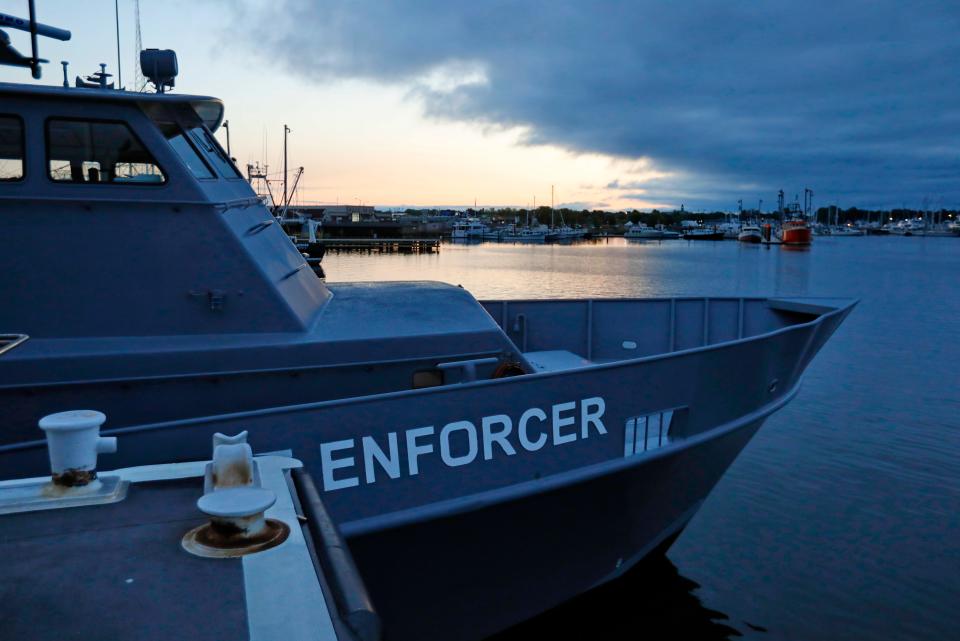What's the Jones Act? How it matters to Massachusetts' and Rhode Island's workers
NEW BEDFORD — Any vessel that transports merchandise between U.S. points or that conducts dredging or carries passengers must be wholly owned by U.S. citizens and must be documented in the U.S., which means it is built in a U.S. shipyard and then the vessel is crewed by U.S. citizens.
The Jones Act, part of the Merchant Marine Act of 1920, was named after former Sen. Wesley Jones, R-Washington, who was the primary author and sponsor of the law, stipulates that only American ships could carry cargo between American ports.
Specifically, it supported construction of a merchant fleet, according to Massachusetts Maritime Academy Assistant Professor Jill Taft in the Social Science Department.
“The Jones Act was enacted to specifically support a United States flag merchant fleet and the related industries like shipbuilding that would support the construction of those types of vessels,” she said.

The Jones Act as a federal statute
She said the Jones Act is a federal statute that companies must comply with or face significant financial penalties for violating it. They would have to work with U.S. Customs and Border Protection, the agency responsible for interpreting and issuing rulings as authorized under the Jones Act.
Taft said one of the sections of the Jones Act is a cabotage law, which guarantees participation of a nation’s vessels in that nation’s domestic trade, also known in the United States as coastalized trade.
“Any vessels engaging in coastalized trade must be owned by U.S. citizens, built in the U.S. and crewed by U.S. mariners,” she said.
She said fishing operations, towing vessels and dredging also come under the provisions of cabotage law.
Another section of the Jones Act provides a personal injury remedy for a seafarer injured in the course of their employment on a U.S.-flagged vessel, she said. Specifically, it allows the seafarer to bring a cause of action in negligence against the employer.
She said under the general maritime law, the employer of a Jones Act compliant vessel has an obligation to pay “maintenance and cure” to an American seafarer when injured on duty by providing medical treatment until the seafarer is healed and ready to go back to work.
She said this obligation typically goes hand in hand with a Jones Act negligence suit.

The impact of the Jones Act
Tait said the Jones Act is alive and well in the U.S. and has been implemented throughout the industry.
“You could see the Jones Act at work every day by standing alongside the Cape Cod Canal and seeing the tugs and barges that are typically transporting fuel between U.S. ports,” she said. “Those tug and barge units, which are generally called articulated tug and barge units, have been built in U.S. shipyards, they are owned by U.S. companies, and the mariners that are navigating and working in the machinery spaces on those vessels are U.S. citizens.”
This spring semester, Taft taught a new course on Offshore Wind Law and Policy for the first time. She also teaches admiralty and maritime law as well as a class on legislative compliance.
In the offshore wind class, Taft touches on the Jones Act as well as in her admiralty and maritime class as many of her students, including marine transportation and marine engineering majors, will be its direct beneficiaries since they will go to work on Jones Act compliant vessels.
“They are the future mariners who are going to be operating these vessels,” she said.
She said students in other majors will also find it important to understand the implications of the Jones Act because they may go to work for industries that support vessel operations or work on the regulatory side and would benefit from knowledge of the requirements and how not to violate the rules.
“The Jones Act is benefiting a lot of people from the New England area whether it’s vessel-related jobs or jobs in the shipyards and maritime-related industries,” she said.
She said there are significant economic benefits for New England and the U.S. because it contributes significantly to the economy.
She said two shipyards in Rhode Island, Senesco Marine and Blount Boats, are currently building vessels that will be Jones Act compliant for work on the wind farms
“This is directly beneficial to the citizens of New England,” she said. “If we look at Jones Act vessel operators and mariners, both Massachusetts Maritime Academy and Maine Maritime Academy in Castine, Maine are directly contributing mariners to the Unites States Merchant Marine.”
Standard-Times staff writer Kathryn Gallerani can be reached at kgallerani@gannett.com. Follow her on Twitter: @kgallreporter. Support local journalism by purchasing a digital or print subscription to The Standard-Times today.
This article originally appeared on Standard-Times: Who works on offshore wind projects? A 1920 maritime law explained

